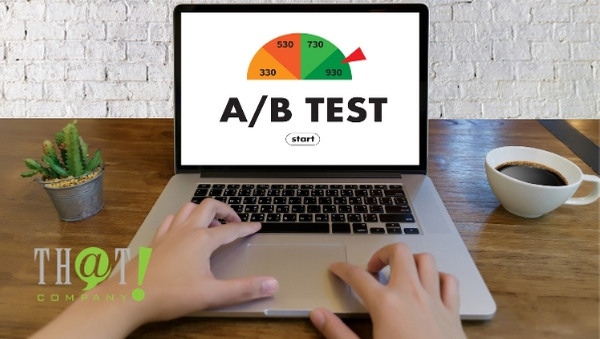 In the Search Engine Marketing (SEM) world, claiming dominance with the best search ads is a top priority. The fact is, there are an assortment of ad types, each with their specific purpose. Also known as Pay Per Click (PPC), Search Engine Marketing is used to find people that are primarily looking for a specific product or service. Although commerce is a primary target, there are many groups that simply want important information such as information on medical conditions or medical services available to the public.
In the Search Engine Marketing (SEM) world, claiming dominance with the best search ads is a top priority. The fact is, there are an assortment of ad types, each with their specific purpose. Also known as Pay Per Click (PPC), Search Engine Marketing is used to find people that are primarily looking for a specific product or service. Although commerce is a primary target, there are many groups that simply want important information such as information on medical conditions or medical services available to the public.
Search Engine Marketing has morphed over the years from a basic text ad to display and shopping ads. Any ad for which a company is charged by Google, Microsoft, or other platforms, is a search ad. Google’s text ads over the past several years have gone from one headline with 25 characters and two description fields with 30 characters each to two headlines with 30 characters each and one description field of 90 characters.
Most recently, Google has expanded the text ad again to have a third headline and a second description field. Google’s intent with this expansion it to display variations of ads depending on the search term the user entered in the search field. By doing this, Google thinks it will give the user more of the information they are looking for. Some agencies stay away from the additional headline and description fields so they can have true AB testing of ads.
AB Testing Your Best Search Ads
AB testing allows for new ads to be tested by altering only part of the ad to determine which version performs better. Getting enough data to determine which ad is producing best can take two to three months. There are a couple of ways to use AB testing. The first is with testing landing pages and how the user reacts to the page. How often do they convert or take a particular action the advertiser is looking for? Once a determination evolves as to which page is best, a new landing page is created. It will include changes to page copy or images, something that will attract the user’s attention.
[bctt tweet=”You cannot use manual CPC on dynamic ads since Google controls them.” username=”ThatCompanycom”] The second method for AB testing is ad copy. With this test, you will use the same landing page throughout the test. You can start with two completely different ads or ads that have just one field different. Once you have enough data and determine which ad has performed best you will alter one field in that ad and run it against the best ad from the prior test.
The second method for AB testing is ad copy. With this test, you will use the same landing page throughout the test. You can start with two completely different ads or ads that have just one field different. Once you have enough data and determine which ad has performed best you will alter one field in that ad and run it against the best ad from the prior test.
There is nothing stopping you from going from one AB testing form to the other. If this sounds confusing, let me clear it up. Let us say you start with the ad copy AB test. After two or three ad changes you want to see if a new landing page would be more effective. There is nothing stopping you from trying that. Take the best performing ad from the ad copy AB test and use different landing pages on two ads. This will work the other way as well. Run your AB test on landing pages for several changes then use the best performing landing page with different ad copy.
This could apply to display ads as well. Use the same image and change the ad copy in the image or use different images but use the same ad copy in the images.
Why the Extra Headlines and Description Fields Will Not A/B Test Properly
By having the two extra headlines and one other description field, you take away the consistency needed to run an AB test. Google’s changing fields, and the order in which they are shown, changes the game completely. Did the user react to one of the headlines or did they react to one of the description fields? Another twist is that Google could, and has, used all three headlines and both description fields. In this environment, there is no way to know what the user reacted to.
Google Built Ads
 Wait. What is Google built ads? With Google’s artificial intelligence learning, they feel they can pull information directly from the site to create ads that relate more to the user’s search term than what someone can write. Called Dynamic Search ads, they have proven to be effective. But they still take away the human emotion factor that can turn a user from prospect to client.
Wait. What is Google built ads? With Google’s artificial intelligence learning, they feel they can pull information directly from the site to create ads that relate more to the user’s search term than what someone can write. Called Dynamic Search ads, they have proven to be effective. But they still take away the human emotion factor that can turn a user from prospect to client.
Pulling ad copy from a site is standard practice when writing ads. It helps with the quality score to have a correlation from the keyword to the ad to the landing page. However, you can also use fresh copy that can persuade users into clicking on your ad.
Best Use of Dynamic Search Ads
Dynamic search ads are best used with well-developed websites or e-commerce sites with a large inventory. Google suggests using a target CPA or enhanced CPC (Cost Per Click) bidding strategy. You cannot use manual CPC on dynamic ads since Google controls them.
With Dynamic ads, you supply the description field and assign either the entire site or specific pages from which Google should pull information. When using a dynamic ad in a branding campaign, to best match the user’s search, you would let Google pull information from the entire site for the headlines. If you are wanting to focus on a specific product type or service, you would list the web pages you want Google to pull from. Focusing on a topic that is too specific and has one or a few pages will make it difficult to put the ad together as the reach may not be broad enough to get your message across.
Another choice is Responsive Search ads. Responsive search ads are deployed in conjunction with expanded text ads in an ad group. It is suggested to run two expanded text ads and one responsive search ad in an ad group, but you can run up to three active responsive search ads simultaneously.
Responsive search ads work from multiple headlines and descriptions. To be most effective, you should supply 5 unique headlines and 3 descriptions from which Google can select to create an ad. If you have ad copy that should appear in all ads, they should be in Headline 1 and Headline 2, or Description field 1.
The Difference
 You must be wondering, “Why not let Google do the work and not have to create new ads on a regular basis?” First, you lose the ability to run AB tests in your ads to improve your traffic and conversions. Using a set number of options in responsive ads limits your message overall. To try to improve user response you still must rework the fields to new ad copy.
You must be wondering, “Why not let Google do the work and not have to create new ads on a regular basis?” First, you lose the ability to run AB tests in your ads to improve your traffic and conversions. Using a set number of options in responsive ads limits your message overall. To try to improve user response you still must rework the fields to new ad copy.
The second, and most important reason, is bidding and spend. Google will not go over your monthly budget, which it calculates at the beginning of the month from the daily spend. However, you could run out of budget before the end of the month. This would mean your ads would not show until the beginning of the next month. Google adjusts bids in dynamic and responsive search ads. With manual CPC you have full control of your bids at the keyword level. You can push keywords that are bringing the best traffic leading to conversions.
If you do not have the time to review keywords and other aspects of your paid search, then Dynamic and Responsive ads are the way to go. But for full-control text search ads, using manual CPC is the preferred method for best results.
























